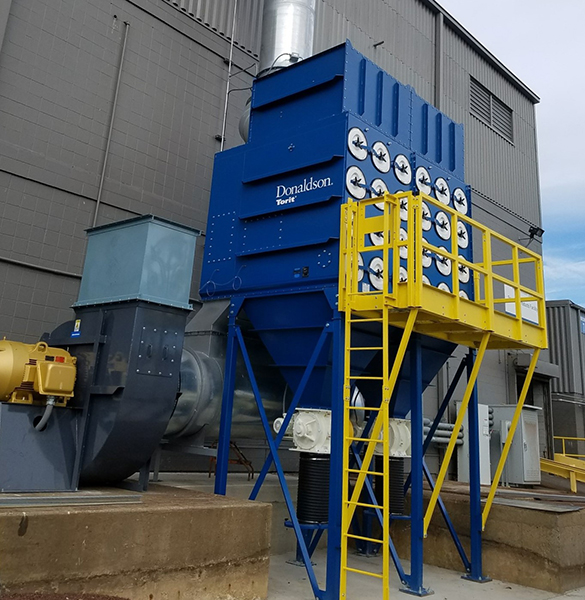Industrial Dust Collection

Industrial Dust Collection
When industrial dust collection equipment is integrated into complete systems, they maximize the removal of airborne contaminants from polluted airstreams prior to atmospheric discharge. Where feasible, they allow the return of cleaned air back into the manufacturing facility.
The type of industrial dust collector you need, as well as the final ventilation system design, depends on several “key” factors. These include the collected particulates’ physical and chemical composition, process exhaust conditions of temperature and moisture, and both local and federal regulations.
Importance of Industrial Dust Collection Systems
Effective industrial dust collection system designs provide:
- Employee protection from the harmful effects of air pollutants in the form of dust, fumes, and mists.
- Facilities that are compliant with safety, occupational health and air emission regulations.
- Protection for the local environment from air pollutants generated by manufacturing processes.
- Personnel and facility safety in the form of explosion protection when handling combustible dust.
- Attenuation of excessive noise, either as personnel hearing protection or adherence to sound levels at the property line.
Industrial dust collection systems are made up of important pieces of equipment that need to be operating as designed for efficient operation. From the dust collector type, filter media selection, fan performance and placement, dampers, silencers, duct, and capture hoods all need to be “matched” to maximize collection efficiency. Walkthroughs will point out design errors or wear points in the system and troubleshooting will determine the extent of repairs needed. If access is not possible, virtual inspections are an option.
Types of Industrial Dust Collection Systems
There are two key areas we focus on when reviewing a new system layout. First, the geometry and chemistry of particulate in the air stream which determines the way we configure and select components. Clean air system flow control components such as multibladed dampers on the “dirty side” can no longer be used as they would gum up or fail prematurely. The second key factor is keeping particulate in suspension after it is collected and effectively conveying it to the filtration device. Should equipment slowly fail or breakdown, particulate settling in the duct creates potential duct collapse, leaks in the duct, fire and explosion potential, additional static pressure loses with increases in fan horsepower, fan wheel abrasion, and imbalance.
Our systems approach is divided into two types:
Ducted Pollution Control Systems – These systems are often termed central systems meaning the pollution control device or dust collector is located away from the process collection point and a duct system conveys the material to the air cleaning device. It is critical when evaluating systems that all the components included are of equal quality and value. The major components would include the dust or mist collector, capture hood (s), conveying duct, flex connector (s), fan damper, and HEPA filter assemblies. Also, duct layout, start-up and commissioning services, and controls need to be closely evaluated.
Self-Contained Dust Collectors – Self-contained dust collectors are a “complete” system by design, in that they include all the items included in a ducted system, but without the duct. These would include smaller cartridge and envelope bag collectors, portable dust collectors, downdraft benches, downdraft tables, portable equipment, and environmental control booths.
SysTech has developed quite a few systems since 1985. We configure industrial dust and fume collection systems using quality components and the proper materials of construction.